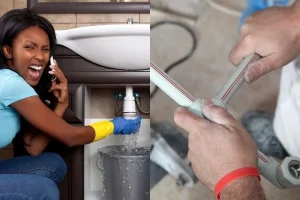
Let’s be honest. We think about our home’s security system, the smart thermostat, even the Wi-Fi-connected fridge. But water? It’s just there, right? Flowing reliably through pipes we never see. Until, of course, it isn’t. Until a tiny, persistent drip becomes a torrent in your ceiling or a silent leak under the slab foundation slowly, methodically, destroys your home’s very structure.
That’s the scary part. Water damage is often a silent emergency. It happens behind walls, under floors, in the dark. But what if your home could tell you the moment something was wrong? What if you had a digital guardian watching over your pipes 24/7? Well, that’s exactly what smart home water monitoring and leak prevention systems are. They’re the peace of mind you didn’t know you were missing.
How Do These Smart Water Systems Even Work?
At their core, these systems are the nervous system for your home’s plumbing. They sense, they learn, and they alert. Most setups use a combination of a few key components.
The Brain: The Main Controller & App
This is the hub, the command center. It connects to your home Wi-Fi and talks to all the other sensors. Through a smartphone app, it gives you a real-time look at your water usage, sends you instant alerts, and lets you control the whole system from anywhere. It’s where the magic happens.
The Sentinel: The Automatic Shut-Off Valve
This is the muscle. Installed on your main water line, this motorized valve can, with a single command from the brain (or a sensor), twist shut and stop the flow of water entirely. It’s the ultimate “kill switch” for a major leak. Think of it as a circuit breaker, but for water.
The Scouts: The Leak Sensors
These are your tripwires. Small, battery-powered discs you place anywhere water shouldn’t be: under the sink, by the water heater, in the basement, behind the washing machine. The moment they detect moisture, they scream for help, telling the brain to alert you and, if you want, to shut the main valve off.
Some systems go even further, using acoustic sensors or flow meters that listen for the unique sound of water running where it shouldn’t or measure tiny, persistent flows that indicate a pinhole leak.
Why Bother? The Real-World Benefits Are Staggering
Sure, it sounds cool. But is a smart water monitor worth the investment? Honestly, the numbers speak for themselves.
| Statistic / Benefit | The Impact |
| Average Cost of Water Damage Claim (US) | Over $10,000 |
| Gallons Wasted by a Leaky Toilet | Up to 200 gallons per day |
| Potential Insurance Discount | Up to 20% (varies by provider) |
| Early Leak Detection | Can prevent 90%+ of damage cost |
But it’s not just about avoiding disaster. It’s about smarter daily living. You can see, in real-time, how much water your morning shower uses. You’ll get an alert if someone left the garden hose on. You can even detect a running toilet—a ridiculously common and expensive problem—that you’d never hear otherwise.
Choosing Your System: A Quick Buyer’s Guide
The market has a few big players, and your choice really depends on your home and your worries. Here’s a quick, no-nonsense breakdown.
- For the Tech-Savvy & Data-Hungry: Systems like Flo by Moen are the gold standard. They offer a professional-grade shut-off valve and incredibly detailed water usage analytics. They can tell the difference between a shower, a dishwasher cycle, and a leak. It’s like a fitness tracker for your home’s plumbing.
- For the Smart Home Enthusiast: If you’re already in the Amazon Alexa, Google Home, or Apple HomeKit ecosystem, look for systems that integrate seamlessly. Phyn is a major player here, offering robust monitoring and the ability to create automations. “Hey Google, turn off the main water supply.”
- For the Renter or Budget-Conscious: You don’t always need a full shut-off valve system. Start with a simple, affordable system like D-Link or Govee water sensors. They can’t stop the water, but they’ll scream bloody murder the second they get wet, giving you a crucial head start. It’s a fantastic first layer of defense.
Installation: The Big Question
This is where people get nervous. The shut-off valve? Yeah, that typically requires professional installation by a plumber. It needs to be fitted correctly onto your main water line. The sensors, on the other hand, are a breeze. Honestly, it’s peel-and-stick or just place-and-forget. You can build your system out over time, starting with a few key sensors and adding the brain and valve later if you choose.
Beyond the Flood: The Subtler Perks
Preventing a catastrophe is the main event, for sure. But the benefits ripple outwards. Knowing your water usage can make your household more conscious and eco-friendly. You can identify inefficient appliances. And then there’s the peace of mind when you’re on vacation. That nagging feeling—”Did I leave a faucet on?”—just vanishes. You can open the app, see zero water flow, and go back to your piña colada.
It’s a quiet confidence. A layer of digital armor for one of your home’s most vulnerable systems.
A Final Thought
We insure our cars, our health, our lives. We install smoke detectors and security cameras. These are all reactions to known, quantifiable risks. Water damage in a home isn’t a question of “if” for most homeowners, but “when.” A smart water monitoring system is a proactive step. It’s a small, intelligent investment that shifts the narrative from hoping for the best to knowing you’re covered. It turns your home from a passive structure into an active partner in its own protection. And honestly, in a world full of uncertainties, that’s a pretty smart upgrade.




